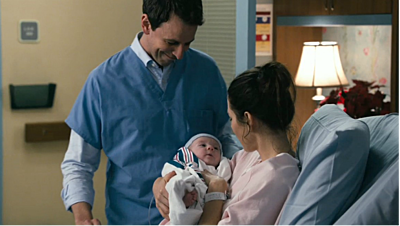How many times have you heard your friend complain about nipple soreness during breastfeeding or maybe you yourself have been through this if you are a mother. As women, we all understand that breastfeeding is not easy. So, we thought it would important to talk about how to take care of your nipples while breastfeeding.
Castor Oil Has a Lot of Health and Beauty Benefits...Here They Are
How to take care of the nipples during breastfeeding
There are two stages of nipple care for breastfeeding. The first stage is during pregnancy and the second immediately after your start breastfeeding...
First: Preparing nipples for breastfeeding before the baby arrives
In the past, women were advised to touch the nipples frequently during pregnancy, and some even said that it was necessary to pull and push them to kind of prepare them for breastfeeding later. But is that? Doctors say that this is just a bad habit that's been inherited and has no medical basis and may even be harmful. So if you're pregnant and are looking for ways to prepare your nipples for breastfeeding, here's what you can do:
24 Gift Ideas for Moms-to-Be: From Pampering to Baby Needs
1. Avoid touching your nipples and putting pressure on them frequently. This is because pregnancy hormones make your nipples very tender and sensitive, and with repeated touching and pressure , it can cause severe infections, which do not recover quickly before giving birth.
2. Start keeping an eye out for changes in your breasts and nipples. The body in general goes through many changes during pregnancy, but one of the most prominent is the increase in breast size and change in the color of the areola, surrounding the nipples, to a darker color. These changes are very natural, and are kind of like a preparation for the breasts to start the breastfeeding process. But what if you notice some uncomfortable changes?! We all know our bodies, and you certainly know the shape of your breasts and nipples, so if you notice any change that is uncomfortable and unusual for you, you should immediately check with your doctor.
8 Steps to Help You Get Your Baby to Sleep Through the Night
3. Ask your doctor to examine your nipples to find out their type. Are your nipples flat or inverted?! Because depending on the type, you will need to learn certain ways to avoid soreness or pain.
4. During your pregnancy, try to attend breastfeeding classes, which will teach you how to care for your nipples.
5. Moisturize your nipples regularly. What you can do during the actual pregnancy is not to let your nipples get dry, because this could add to the pain, which you will only start to feel the effect of when you start breastfeeding. Make sure you constantly moisturize using shea butter, or nipple creams.
Second: Nipple care during breastfeeding
After you prepare your nipples well for breastfeeding during your pregnancy, now comes the time to care for them during breastfeeding.
Second Pregnancy Trimester: The Do's and Don'ts You Need to Follow
1. Avoid pulling your nipples out of the baby's mouth
This is something that most breastfeeding mothers do automatically, which is pulling the nipple from her little one's mouth, whether it is because she wants a change in position, the baby's pressing on it or any other reason. But what many people do not know is that this really harms the nipple, and with repetition, it can cause wounds and cracks. Instead, insert your clean finger into the corner of the baby's mouth, until the baby stops sucking on the nipple so you can gently get it out without hurting it.
Note: You must make sure that your hands are really clean so as not to transfer any microbes and germs to your baby's mouth.
2. Treating sore or cracked nipples
Many mothers suffer from sore or cracked nipples, but they ignore it and do not seek treatment, which makes it worse. Therefore, we advise you to treat sore nipples or cracked nipples quickly, and you can do this by:
- Squeeze some breast milk from the nipple and wipe the sore area with it, then leave it on until it dries. The healing properties of milk will help your nipples recover.
5 Essential Do's and Dont's for Breastfeeding and Nursing Clothes
- Use shea butter to moisturize your nipples. But make sure to wash your nipples well before feeding your little one.
- Rub the nipples with olive oil to moisturize them and treat cracks quickly.
- Mix 2 tablespoons of honey with the same amount of aloe vera gel and add 1 tablespoon of olive oil, cocoa butter and glycerin to them. Put the mixture in a clean container and store it in the fridge. Rub your nipples morning and evening with this mixture.
3. Use creams to treat cracked nipples
There are many nipples creams available in the market that you can use. Just make sure they're made with clean, anti-fungal and food-grade ingredients. Also make sure you wash your nipples before feeding the baby.
Sanosan Mama Nipple Salve

A lot of women like this. It's made with pure natural lanolin for extra protection and a powerful calming effect. It is suitable for sensitive nipples as it is free of colourants, fragrances and preservatives.
Lansinoh Lanolin Cream

This product contains only 100% pure refined lanolin. It can be used to relieve pain and discomfort caused by dry, sore and cracked nipples. It also hypoallergenic.
Motherlove Nipple Creammother

It is lanolin free. Formulated with all-natural organic herbal ingredients to help soothe and heal sore nipples. This cream contains virgin olive oil, beeswax, shea butter, marshmallow root and calendula flower. It is non-toxic.
4. Allow your nipples to breathe
From time to time, your nipples should be given space to breathe, to help them recover. Blocking air from your nipples constantly increases the accumulation of bacteria, which increases inflammation.
7 Tips to Help You Pick the Best Underwear for After a C-Section
5. Choose soft bras and clothes
Make sure you choose bras and clothes that feel soft against your skin, preferably cotton ones. Those with coarse fabrics, can make things worse because of the intense friction with the skin, which leads to scratches and blisters.
6. Give your nipple a chance to heal
If one nipple is more hurt and of course you can't stand the thought of breastfeeding with it, it's time to give it a chance to heal. Just stop feeding your baby from that nipple, and feed your baby from other one for 12-24 hours. To avoid the other breast being hurt as well, you can use a breast pump.
Main Image Credits: Via Pinterest















